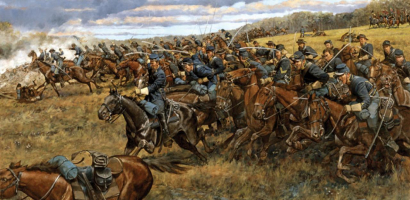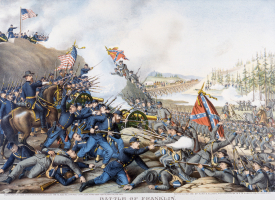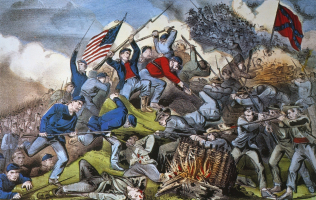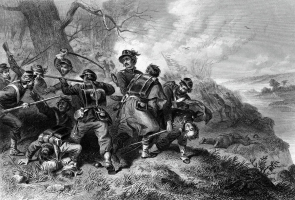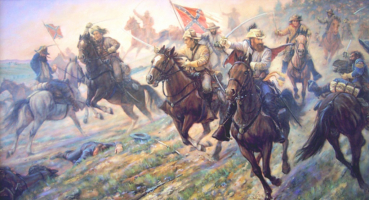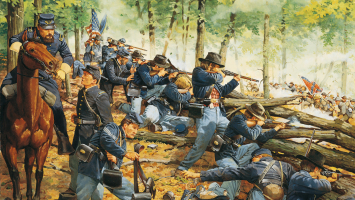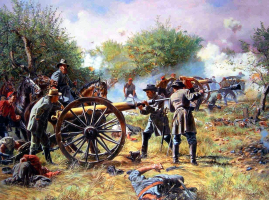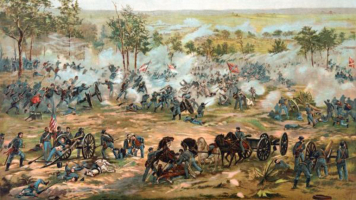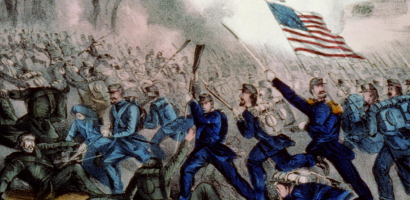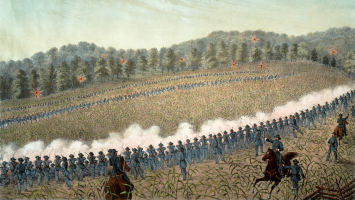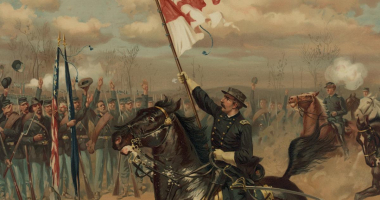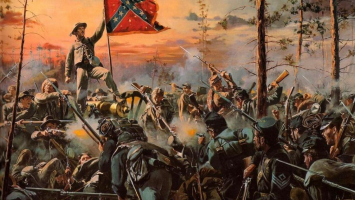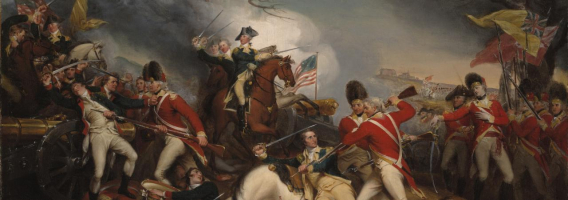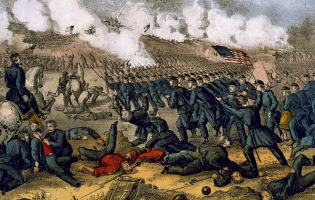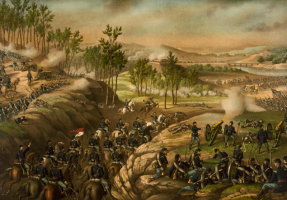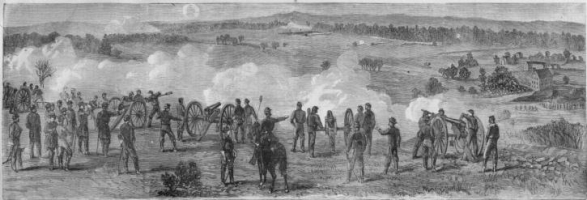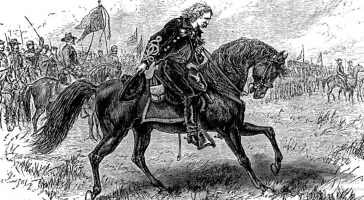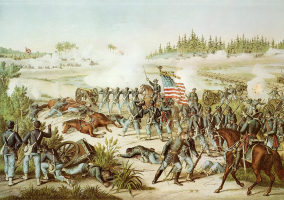Top 6 Facts About The Battle of Stones River
The Battle of Stones River, also known as the Second Battle of Murfreesboro, was fought in Middle Tennessee from December 31, 1862, to January 2, 1863, as the ... read more...finale of the Stones River Campaign in the American Civil War's Western Theater. Here are some interesting facts about the Battle of Stones River we compiled for you.
-
One of the most remarkable facts about the battle of Stones River is that it was part of a grand Union offensive. Following the Battle of Perryville on October 8, 1862, in Kentucky, Confederate general Braxton Bragg's Force of Mississippi withdrew to Harrodsburg, Kentucky, where it was joined on October 10 by Maj. Gen. Edmund Kirby Smith's 10,000-man army. Despite having 38,000 veteran soldiers in his newly merged force, Bragg made no attempt to retake the initiative. The Union commander at Perryville, Maj. Gen. Don Carlos Buell exhibited a similar lack of aggression by choosing not to attack Bragg.
Maj. Gen. William S. Rosecrans, who had recently won the engagements of Iuka and Corinth, took the position of Buell on the Union side after President Abraham Lincoln grew impatient with him for his inaction. Washington told Rosecrans that if he did not move firmly against Bragg and seize eastern Tennessee, he too would be dismissed. Rosecrans marched his XIV Corps (which was shortly after dubbed the Army of the Cumberland) to Nashville, Tennessee. Rosecrans, however, took enough time to reorganize, train, and restock his army's forces, especially his cavalry. He didn't start marching after Bragg until the 26th of December.
Abraham Lincoln and General-in-Chief Henry Halleck made the decision to pressure the Confederacy on all fronts in the latter months of 1862. They thought the simultaneous assaults of Ambrose E. Burnside in Virginia, William T. Rosecrans in Tennessee, and Ulysses S. Grant in Mississippi would prevent the Confederates from shifting reinforcements to counter them. While Grant's campaign against Vicksburg faltered and Burnside met with tragedy at Fredericksburg, Rosecrans lamented a shortage of supplies and did not proceed until December 26. Rosecrans' grand strategy worked despite tactical setbacks in the east and west, as Confederate commander Braxton Bragg, in charge of the army in Tennessee, dispatched around one-sixth of his infantry to reinforce Vicksburg on December 16.
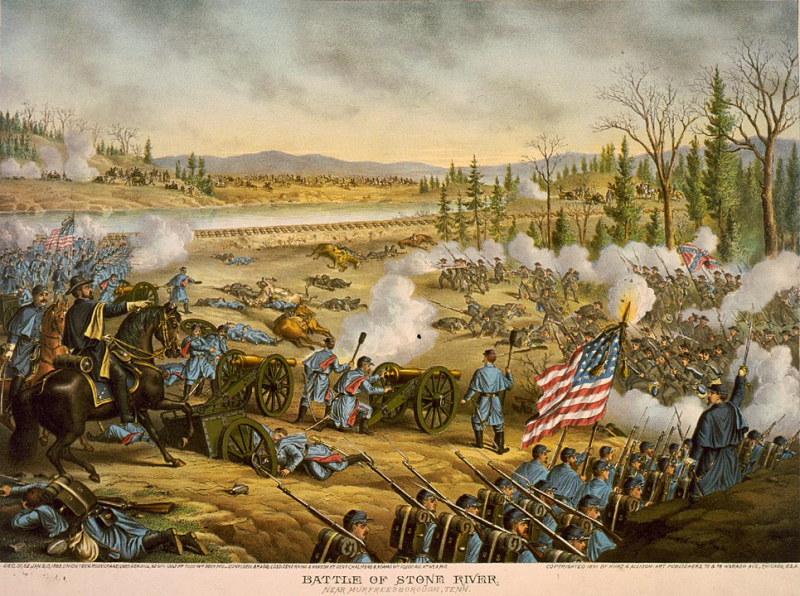
en.wikipedia.org 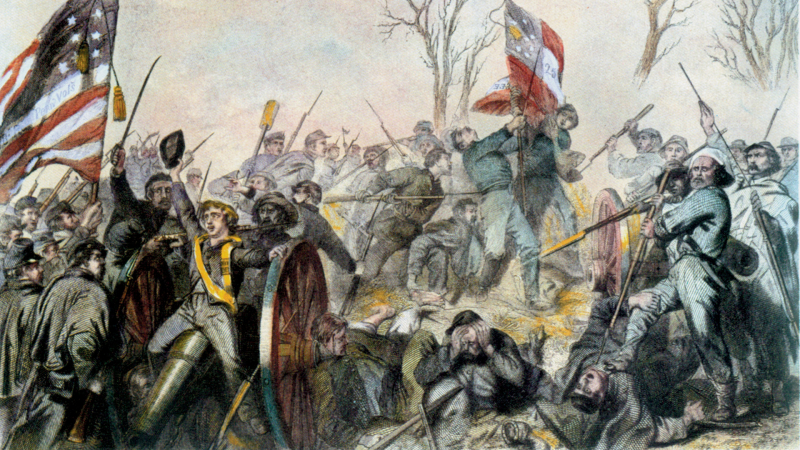
warfarehistorynetwork.com -
Another fact is that although the terrain of battle afforded no exceptional advantages for defense, Bragg was hesitant to move further north. A previous state capital, Murfreesboro was a small town in the Stones River Valley named after Hardy Murfree, a colonel in the American Revolutionary War. Throughout the month of December, Bragg and his troops were warmly greeted and entertained here. It was situated in a prosperous agricultural area from which Bragg hoped to supply his army. Bragg also intended to utilize it as a defensive position against any Union push on Chattanooga. The terrain of battle afforded no exceptional advantages for defense, Hardee observed after the conflict. Despite this, Bragg was hesitant to move further north, to Stewart's Creek, where Rosecrans believed Bragg would defend, or farther south, to the possibly more defendable Duck River Valley.
He selected the comparatively level territory northwest of the strategically significant city, spanning the Stones River, considering the political imperative that virtually no Tennessee ground be given to Federal control. Parts of the region were covered in small but dense cedar forests, making some areas more inaccessible to infantry than the Wilderness of Spotsylvania in Virginia. This was especially true in the area close to the convergence of the Nashville Pike and the Nashville and Chattanooga Railroad. Initially, Polk's on the west side of the river, Hardee's Corps in Triune, about 20 miles (32 km) to the west, and a separate division of Hardee's Corps under Maj. Gen. John C. Breckinridge on the low hills east of the river were all assigned. No troops were given the command to build field defenses.
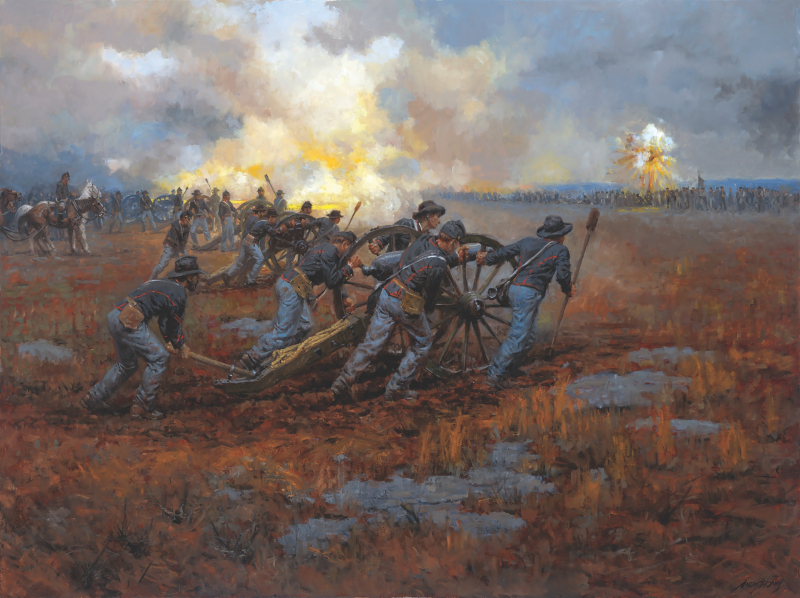
historynet.com 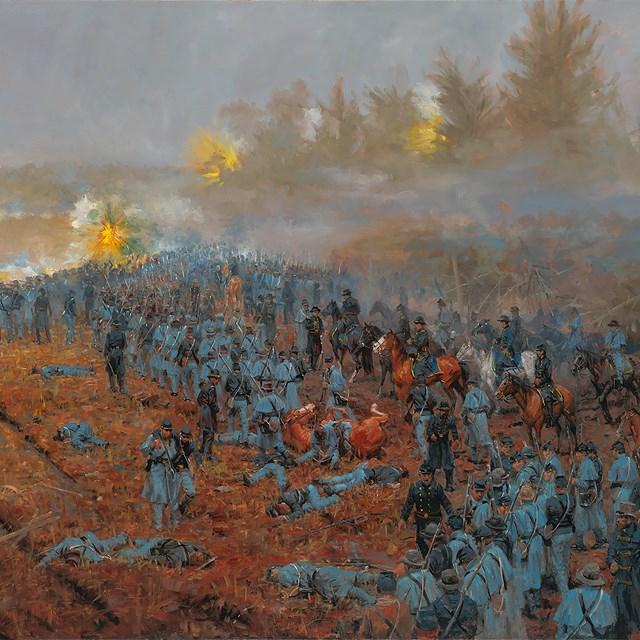
nps.gov -
One of the most interesting facts about the battle of Stones River is that throughout the engagement, the Confederates were hampered by a series of ambiguous and erroneous reports. False information exacerbated Bragg's combat plan's flaws. On the 31st, Breckinridge relayed word that a considerable Federal force was assembling for an attack on the Stones River's eastern flank. This was false, and Breckinridge would have been discredited if he had done proper reconnaissance. Late in the morning, this information was proven incorrect, and Bragg directed Breckinridge to join the main line on the western side of the river. However, before Breckinridge could redeploy, a messenger came with word that another Union column was marching east of the river. Breckinridge was delayed once more while this report was investigated and deemed invalid.
The first day's onslaught was reduced by misleading information, notwithstanding its severity. Bragg's decision to establish a headquarters remote from the battlefield led to tactical disarray. Following the combat on December 31, Confederate cavalry stationed in the Union rear reported that Rosecrans' army was ready to retire. Bragg was all too eager to believe this news, and he confidently restrained a new assault while waiting to seize control of an uncontested field. Instead, Rosecrans remained in place and gathered further forces. In the face of this unprecedented concentration, Bragg's position became untenable.
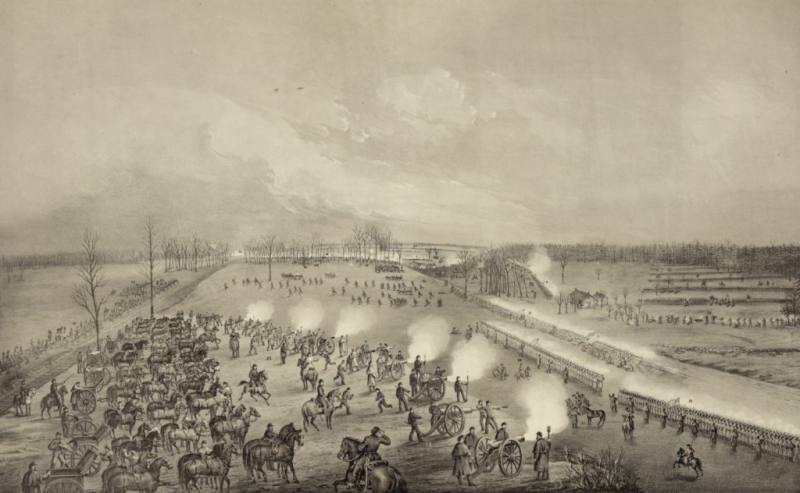
historynet.com 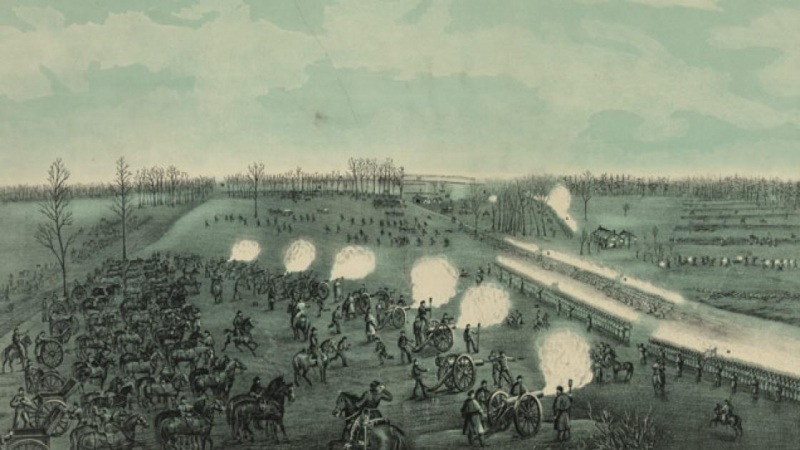
battlefields.org -
It is a fact that a conflict between Braxton Bragg and Maj. Gen. John Breckinridge may have led to the Confederacy's defeat in the Round Forest. By 11:00 a.m., Sheridan's ammunition was depleted, and his division withdrew, leaving a breach that Hardee exploited. With reinforcements and massed artillery, Union troops regrouped and held the Nashville Pike. Repeated attacks on the Union line's left flank were stopped by Col. William B. Hazen's brigade in a craggy, 4-acre (16,000 m2) woodland area known locally as "Round Forest"; it later became known as "Hell's Half-Acre."
Bragg intended to attack the Union left, which was a section of the oval line facing southeast and guarded by Hazen's brigade. Breckinridge's forces were the only ones available for such an assault, and Bragg ordered him to cross the river, but Breckinridge moved slowly. After fighting against Sheridan, Maj. Gen. Leonidas Polk's corps began a series of piecemeal but fierce attacks that failed to dislodge the Union troops. Bragg ordered John Breckinridge's division to resume the assault, but Breckinridge was reluctant to reply. The two had been at odds since a soldier in Breckinridge's corps was hanged for desertion earlier that month. The incident reinforced Breckinridge's perception that Bragg was unconcerned about the lives of his men. Breckinridge grudgingly sent his soldiers into the Round Forest at 4 p.m., where they arrived too late to have an impact.
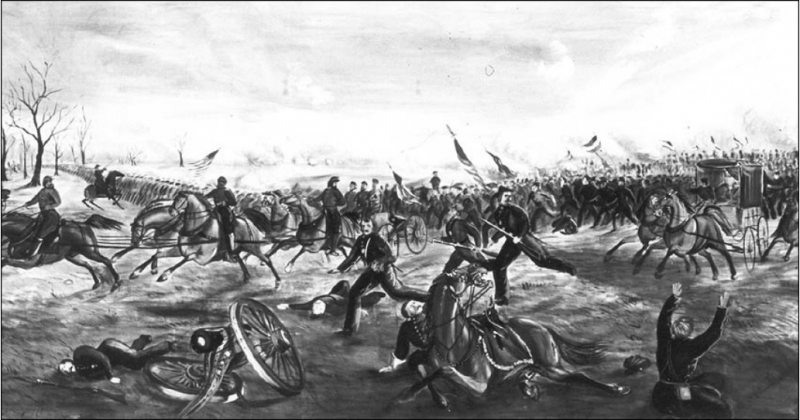
nps.gov 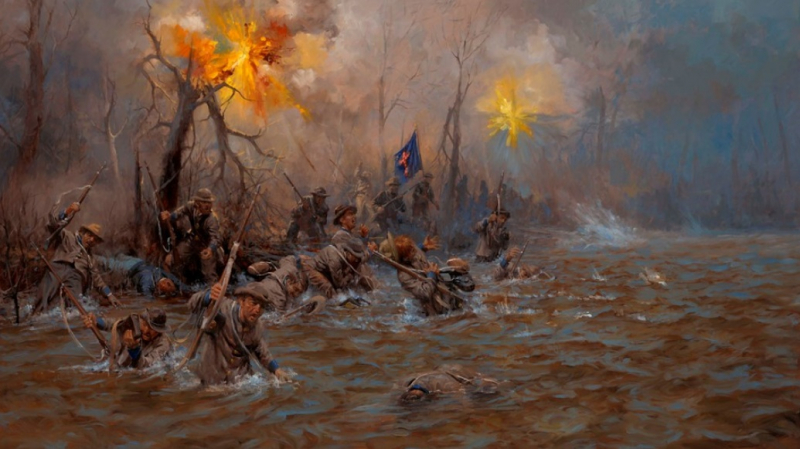
nps.gov -
One of the most interesting facts about the battle of Stones River is that the Battle of Stones River was a tactical tie, but a strategic success for the Union. Bragg's refusal to renew the Confederate assault on January 1 allowed Rosecrans to fortify his position and obtain reinforcements. To be fair, if Bragg had launched his attack on New Year's Day, there was no guarantee of victory. His battle strategy had accomplished its objectives but not its goal, and the Union army remained in a strong defensive posture. After the failed charge on January 2, Bragg concluded he couldn't win another battle against Rosecrans's reorganized force and chose to retire back to Tullahoma, Tennessee.
The battle was a draw since neither side had swept the other off the field. However, in the weeks that followed, it began to resemble a Union win. The relatively beneficial outcome of Bragg's unforced withdrawal boosted Northern morale, shifted foreign opinion against the Confederacy, and consolidated the Federal hold on Tennessee. Meanwhile, Bragg abandoned 10,000 irreplaceable veterans in the bitter cedar woodlands and became the subject of mockery from his lieutenants while cooped up in Tullahoma for months.
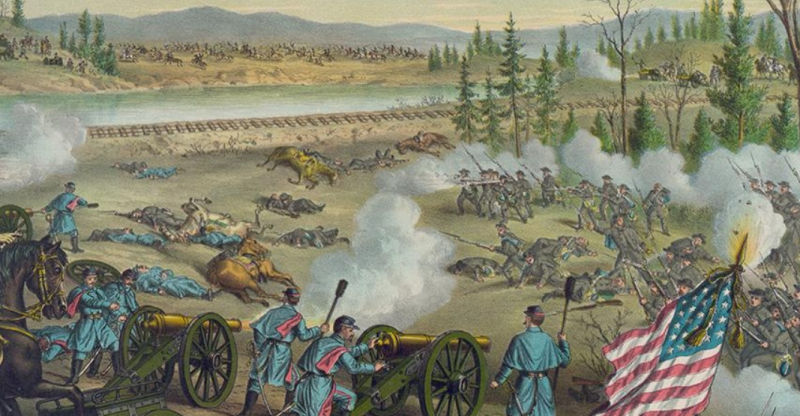
battlefields.org 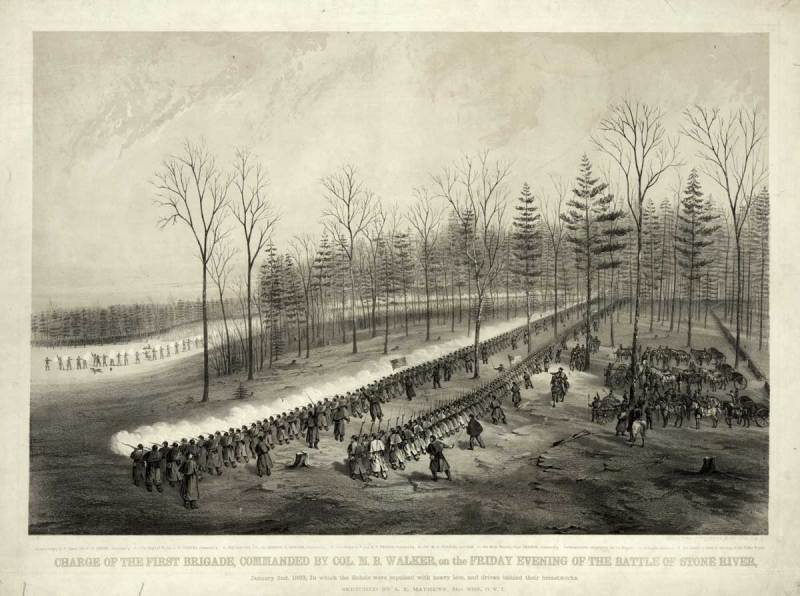
leben.us -
It is a fact that of the major battles in the Civil War, Stones River had the highest percentage of casualties on both sides. On January 3, Bragg surrendered the field and withdraws his soldiers south to Tullahoma. The North has taken control of central Tennessee, and the Union triumph gives much-needed psychological support, particularly after the recent defeat at Fredericksburg in December 1862. However, the Battle of Stones River resulted in some of the war's highest casualties.
The total number of casualties in the battle was 24,645: 12,906 on the Union side and 11,739 on the Confederate side, representing 31.4% of all troops. Given that only about 78,400 men were involved, this was the battle with the highest percentage of casualties (3.8% killed, 19.8% wounded, and 7.9% missing/captured) of any major battle in the Civil War. It had more casualties in absolute numbers than the infamous bloodbaths at Shiloh and Antietam earlier that year. Confederate James E. Rains and Roger W. Hanson were killed or badly wounded, as were Union Edward N. Kirk and Joshua W. Sill. Union soldier Frances Elizabeth Quinn, one of several women who disguised themselves as males to fight in the Civil War, was also among the wounded. "You gave us a hard victory which, had there been a defeat instead, the nation could scarcely have lived over", President Lincoln subsequently wrote to Rosecrans.
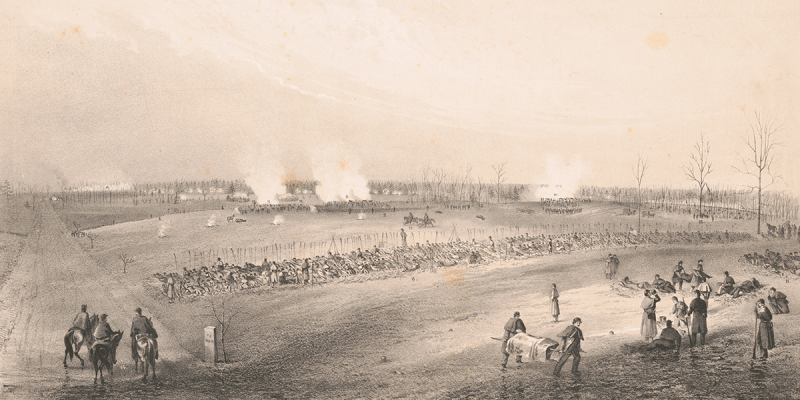
hallowedground.org 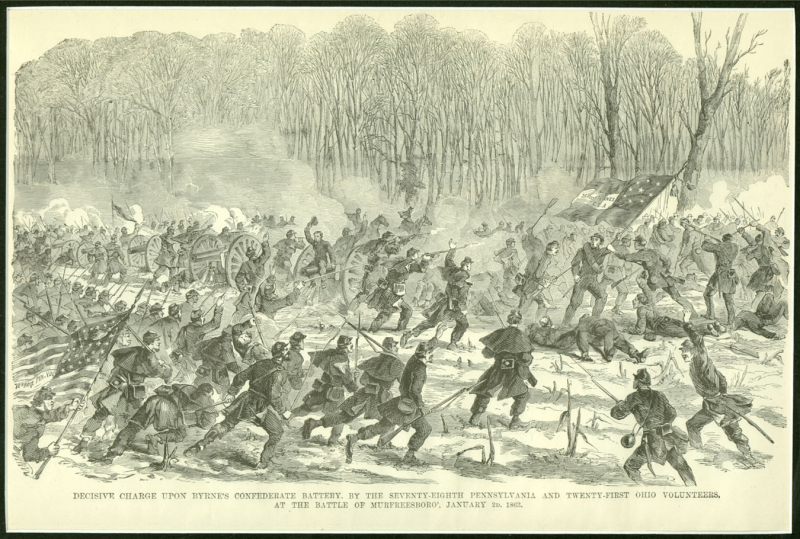
sharetngov.tnsosfiles.com








